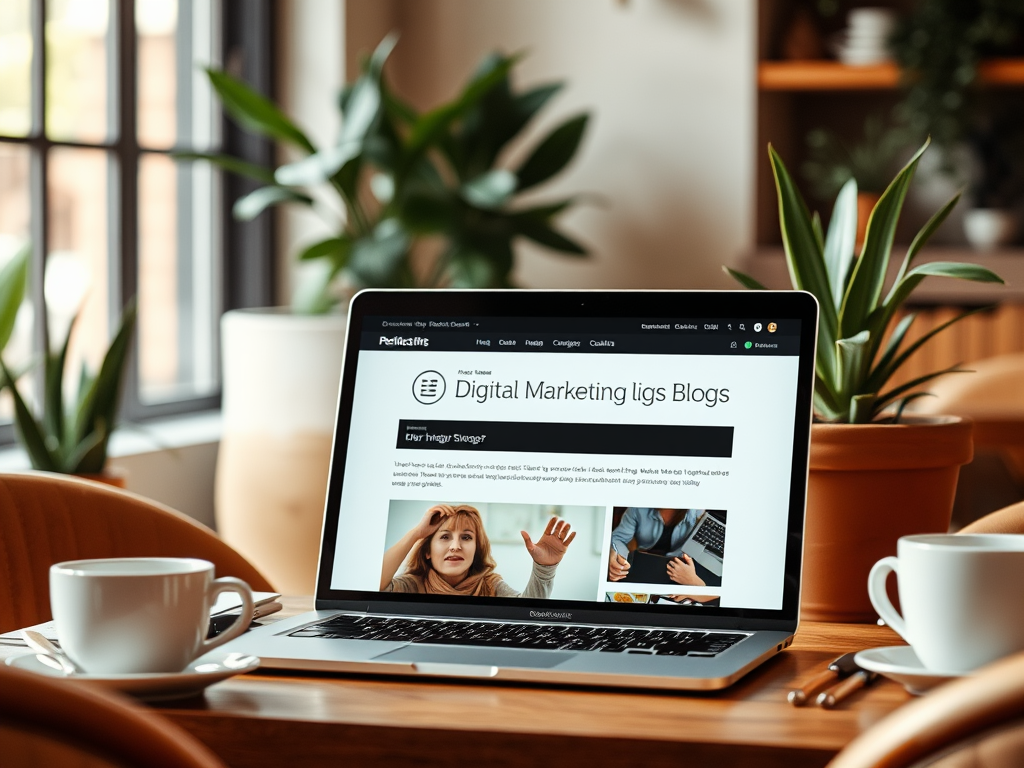In the ever-evolving landscape of digital marketing, capturing the attention of your audience is paramount. Amidst the constant barrage of information, your blog headlines must stand out and entice readers to click. The headlines act as the first impression, setting the tone for your content and influencing whether potential readers engage with your posts. Therefore, mastering the art of headline creation is not just a skill; it’s an essential strategy for increasing your blog’s visibility and engagement. This article explores various techniques to help you craft compelling headlines that resonate with your audience.
Great headlines go beyond mere attention-grabbing tactics—they must also be clear, concise, and aligned with the content they represent. As you navigate through the tips below, you’ll uncover the elements that can transform a mundane headline into a click-worthy invitation. Whether you’re writing about the latest digital marketing trends or offering practical advice on improving SEO, follow these best practices to enhance your blog’s appeal.
Understand Your Audience

To create headlines that resonate, you need to know who you’re writing for. This understanding begins with in-depth audience research. Consider their interests, pain points, and what would compel them to click. Analyze your existing readership and identify patterns in what types of content they engage with most. Utilize tools such as Google Analytics and social media insights to gather valuable data. Armed with this information, you can tailor your headlines to reflect the desires of your audience, ensuring they are both appealing and relevant, ultimately fostering a deeper connection.
Use Powerful Words

Certain words can trigger emotional responses, transforming mundane headlines into compelling ones. Incorporating adjectives and action verbs can create a sense of urgency and excitement that beckons readers to click. Strong headlines often include terms that suggest exclusivity or urgency, leading to higher click-through rates. Examples of powerful words that can elevate your headlines include:
- Free
- Instant
- Essential
- Guaranteed
| Headline Type | Example |
|---|---|
| List-Based | Top 5 Tips for Crafting Headlines |
| Problem-Solution | How to Write Headlines That Convert |
| Urgency | Boost Engagement with These Powerful Headlines Today! |
Keep It Concise
A concise headline is often more impactful than a lengthy one. In a world where attention spans are shrinking, clarity and brevity go hand-in-hand. Aim for headlines that are easily understood at a glance, ensuring they effectively convey the essence of your content. A headline that is too wordy can confuse readers, causing them to lose interest before they even read the full headline. Therefore, focus on distilling your message into its most essential components, maximizing comprehension and draw at the same time.
Incorporate Numbers
Using numbers in your headlines can significantly improve their effectiveness. Listicles and data-driven pieces draw readers in, as they promise concise, manageable blocks of content. Here’s how effectively using numbers can enhance engagement:
- People often prefer taking in information in a list format.
- Numbers imply a structured and organized approach.
- They can create anticipation for specific insights or tips.
Create a Sense of Urgency
Instillin a sense of urgency in your headlines can motivate readers to click immediately. Use time-sensitive language to convey this urgency. Words and phrases such as “today,” “now,” or “limited time offer” can push readers to act instead of postponing their engagement. This strategy is particularly effective in promoting exclusive offers or time-sensitive content. As you craft your headlines, consider the urgency factor as a valuable tool to increase your content’s appeal.
Optimize for SEO
While crafting compelling headlines, do not lose sight of SEO. Integrating targeted keywords will enhance your visibility on search engines, but it’s crucial to do so without compromising the appeal of your headline. This balance can be achieved by naturally incorporating keywords that make sense within the context of your message. Here are some best practices to follow when optimizing your headlines:
- Place keywords near the beginning of your headlines.
- Avoid keyword stuffing to maintain readability.
- Ensure the headline flows smoothly while being keyword-rich.
A/B Testing Your Headlines
Experimenting with different headlines can yield valuable data about what resonates most with your audience. A/B testing allows you to compare the performance of diverse headlines, helping you identify the most effective strategies. By analyzing metrics such as click-through rates and engagement times, you can refine your headline-writing approach over time. Always remember, the aim is to evolve and improve, continually adapting your strategies to meet the changing preferences of your audience.
Conclusion
Crafting compelling headlines is a vital aspect of digital marketing content creation. By understanding your audience, using powerful words, remaining concise, incorporating numbers, creating urgency, optimizing for SEO, and embracing A/B testing, you can significantly increase engagement and drive traffic to your blog. The headline is your first point of contact with readers; make it count and watch your audience grow.
Frequently Asked Questions
- What makes a headline compelling? A compelling headline grabs attention, promises value, and encourages readers to click through.
- How long should a good headline be? Ideally, keep headlines between 6-12 words for optimal engagement.
- Are numbers effective in headlines? Yes, headlines with numbers often perform better because they imply a structured and organized approach to the content.
- How can I test my headlines? Use A/B testing tools to compare different headline versions and analyze click-through rates.
- What role do keywords play in headlines? Keywords improve SEO visibility, making headlines easier to find while still attracting clicks when used naturally.


